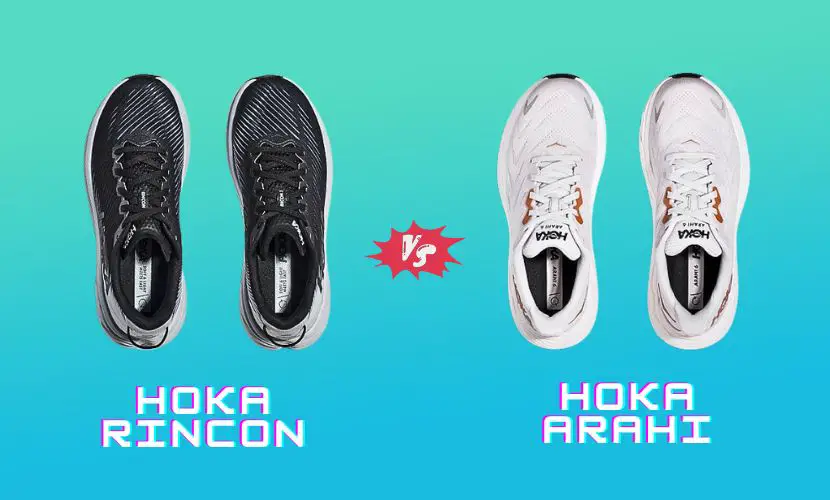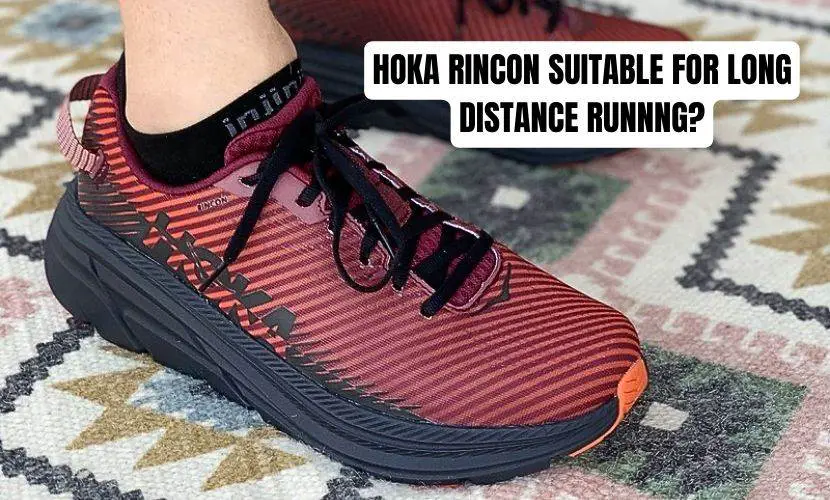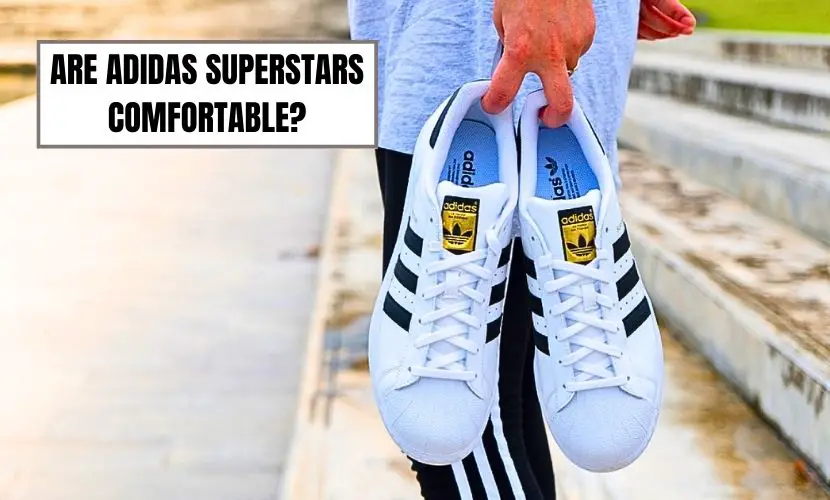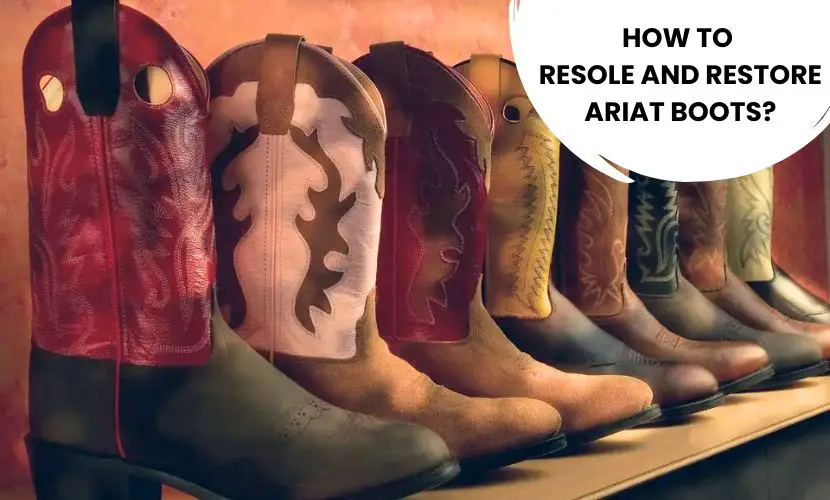Hoka One One is a well-admired brand that has attained a lot of reputation in recent years. Athletes of all standards admire the brand’s revolutionary pattern and padded soles. Two of the most famous Hoka One One running shoes are the Rincon and the Arahi.
The Rincon is a feathery shoe structured for speed; on the contrary, the Arahi is a sturdy shoe engineered to offer aid and minimize the possibility of injury. Both shoes have versatile attributes that make them adaptable for different runners. In this article, we will contrast the Hoka Rincon and the Hoka Arahi to aid you in detecting which shoe is perfect for you.

Feature table for Hoka Rincon Vs Hoka Arahi
| Feature | Hoka Rincon | Hoka Arahi |
| Shoe Type | Lightweight, Speed-focused | Stability, Injury Prevention |
| Weight (Men’s/Women’s) | 7.7 oz / 6.5 oz | 9.4 oz / 7.5 oz |
| Cushioning | Adequate, Responsive | Plush, Supportive |
| Stability Technology | Limited | J-Frame Technology |
| Durability | Moderate | Durable |
| Fit and Comfort | Snug Fit, Breathable | Supportive, Breathable |
| Ideal for Long-Distance Running | Not Ideal for Long Distances | Suitable for Long Distances |
| Price | $115 | $130 |
| Sizing | True to Size, May Need Half Size Up for Wider Feet | True to Size, May Feel Tight for Wider Feet |
Key Takeaways
- The Hoka Rincon is a delicate shoe structured for speed; on the other hand, the Hoka Arahi is a firm shoe constructed to aid and lessen the risk of injury.
- The Hoka Rincon is more adaptable for athletes who prefer speed; on the other hand, the Hoka Arahi is perfect for runners who agree on steadiness and support.
- Both shoes have versatile attributes that make them adaptable for various kinds of runners.
Overview of Hoka Rincon

Hoka One One Rincon is a famous running shoe that has attained a lot of focus among players. It is a feathery, iconic shoe perfect for long-distance running, tempo running, and track sessions. The following are several major attributes of the Rincon:
- Lightweight: The Rincon weighs approximately 7.7 ounces for men and 6.5 ounces for women, making it one of the most delicate shoes in the Hoka lineup.
- Cushioned: Despite its moderate weight, the Rincon still gives adequate padding thanks to its whole-compression EVA midsole. It also provides a thin, permeable netting upper that aids in lessening weight while still giving support.
- Responsive: The Rincon’s midsole is engineered to offer a reactive ride, meaning it rapidly returns energy to the athlete with every stride.
- Versatile: The Rincon is a classic shoe that can control many paces and distances, making it a perfect choice for players who want one shoe to do it all.
Overall, the Hoka Rincon is ideal for athletes who desire a lightweight, padded, and versatile shoe that can control many paces and distances.
Overview of Hoka Arahi
Hoka Arahi is a famous running shoe model from Hoka One One, a brand popular for its revolutionary pattern and padded soles. The Arahi model is a firm shoe with moderate aid and padding for runners requiring additional stability.
The newest version of the Hoka Arahi, the Arahi 5, has a mushy, delicate pattern that gives padded support. The shoe’s open netting upper is resilient and absorbent; however, the sturdy EVA J-Frame on the heel and medial edge gives additional steadiness. The Arahi 5 is perfect for runners requiring moderate firmness and padding.
Contrasted to other stability shoes in the industry, the Hoka Arahi costs at a mid-range cost point, making it an economical choice for runners who require additional stability. The Arahi is often contrasted to other steady trainers such as the New Balance 860, ASICS GT-2000, and Brooks Adrenaline.
Overall, the Hoka Arahi is a dependable stability shoe with mild support and padding for runners requiring additional stability. The shoe’s squishy, delicate design and economical price point make it a famous option among runners of all standards.
Design Comparison

The Hoka Rincon 3 and the Hoka Arahi 5 running shoes contain versatile patterns that adapt to distinct running requirements.
The Rincon 3 offers a feathery, porous mesh upper with a snug runner fit. The cutout in the crash pad makes a cradle-like effect on the heel, giving extra support and steadiness. The shoe’s whole compression EVA midsole delivers a reactive ride and padding; on the other hand, the early-stage Meta-Rocker technology encourages a smoother transition from heel to toe.
Conversely, the Arahi 5 has a more customary pattern with an absorbent engineered netting upper and a cushioned tongue and collar for extra comfort. The shoe’s J-Frame technology gives steadiness and aid for overpronators; on the contrary, the early-stage Meta-Rocker technology motivates an even ride. The whole compression EVA midsole offers padding, and the shoe’s rubber outsole supplies longevity and grip.
In the case of weight, the Rincon 3 is more feathery than the Arahi 5, with a weight of approximately 7.1 ounces, contrasted to the Arahi 5’s 9.6 ounces. However, the Arahi 5 contains a greater heel stack height of 29mm compared to the Rincon 3’s 26mm, making it more adaptable for athletes requiring more padding and support.
Overall, both shoes comprise iconic patterns that adapt to different running requirements. The Rincon 3 is a delicate and reactive shoe ideal for runners who prefer speed; conversely, the Arahi 5 is a rugged shoe perfect for overpronators who require extraordinary support and padding.
Performance Comparison
Cushioning
Regarding padding, both the Hoka Rincon 3 and the Hoka Arahi 5 are major performers. The Rincon 3 offers a whole-compression EVA midsole, which gives remarkable impact absorption and energy backup. Conversely, the Arahi 5 offers Hoka’s signature Meta-Rocker technology, which aids in guiding the foot through the stride cycle and gives an even, snug ride.
Overall, the Rincon 3 features a moderately softer ride compared to the Arahi 5, making it a perfect choice for runners who prefer padding. However, the Arahi 5 still offers adequate padding while featuring extraordinary stability attributes.
Stability
Concerning stability, the Hoka Arahi 5 is the obvious winner. The shoe offers Hoka’s J-Frame technology, which gives extra support and steadiness to the foot while still permitting a natural extent of motion. This makes the Arahi 5 a great choice for athletes who overpronate or require additional support in their shoes.
While the Rincon 3 does not provide a similar level of steadiness technology as the Arahi 5, it still offers a sturdy ride thanks to its broad base and whole-compression midsole.
Durability
Regarding durability, the Rincon 3 and the Arahi 5 are well-constructed shoes that should endure many miles of running. The Rincon 3 gives a hard-wearing rubber outsole with remarkable grip and should hold up well over time. Similarly, the Arahi 5 offers a hard-wearing outsole and upper that should resist the deterioration of regular use.
However, the Rincon 3 is a moderately lighter shoe than the Arahi 5, which could influence its long-term longevity. Furthermore, runners who are specifically hard on their shoes may desire to opt for the Arahi 5, which gives extraordinary stability attributes that can aid in averting premature deterioration.
Fit and Comfort

The Hoka Rincon and Arahi contain their versatile features regarding fit and comfort.
The Hoka Rincon is popular for its feathery and porous design, which gives a snug fit for long runs. The upper is designed with a single-layer netting that adapts to the foot’s appearance, while the cushioned tongue and collar offer extraordinary ease and support. The Rincon also contains a spacious toe box, which permits natural toe splay and averts cramped toes.
Conversely, the Hoka Arahi is structured for runners who require more firmness and support. The Arahi offers a J-Frame technology, which gives a versatile stability attribute that guides the foot without using customary medial posts. The upper is designed of an absorbent mesh material that adapts to the foot; conversely, the cushioned tongue and collar offer extraordinary comfort.
Regarding sizing, both the Rincon and Arahi are true to size. However, several athletes mentioned that the Rincon feels smaller than other Hoka models, so testing on a half-size-up may be worth testing.
Overall, both the Hoka Rincon and Arahi provide a snug and safe fit, with versatile attributes that adapt to distinct kinds of runners.
Weight Comparison

Regarding running shoes, weight is an efficient factor to contemplate. The Hoka Rincon and Arahi models have distinct weights, which can influence the overall running experience.
The Hoka Rincon 3 is popular for its feathery pattern, with a men’s size 9 weighing approximately 7.7 ounces and a women’s size 7 weighing 6.4 ounces. This makes it one of the most delicate shoes in Hoka’s lineup. The Rincon 3’s weight is attained through feathery materials and an unembellished design.
Conversely, the Hoka Arahi 5 is a rugged shoe that is moderately massive than the Rincon 3. A man’s size 9 weighs approximately 9.4 ounces; on the contrary, a woman’s size 7 weighs around 7.5 ounces. Despite being heavier than the Rincon 3, the Arahi 5 is still comparatively delicate for a sturdy shoe.
It’s worth mentioning that weight is not the only point to consider when selecting a running shoe. The standard of padding, support, and fit are also necessary factors. However, the Rincon 3 may be the finer choice for athletes who prefer a lightweight pattern. For those who agree on firmness and support, the Arahi 5 may be the superior option.
Price And Value
Regarding buying running shoes, price and value are obligatory factors to examine. The Hoka Rincon 3 and Hoka Arahi 5 are famous designs from Hoka One One, but they vary in price and value.
The Hoka Rincon 3 costs $115, making it a more economical option than the Hoka Arahi 5, which is approximately $130. However, the cost difference must be more efficient to create a decision solely on price.
Regarding value, both shoes provide versatile attributes that adapt to different kinds of athletes. The Hoka Rincon 3 is a delicate daily trainer, having a 5mm drop and a stack height of 33mm in the heel and 28mm in the forefoot. It is structured for runners prioritizing a more unembellished feel and a faster pace. Conversely, the Hoka Arahi 5 is a sturdy running shoe with a J-Frame midsole that gives aid and padding. It is constructed for runners requiring additional stability and shields during their runs.
The Hoka Rincon 3 has good cost value, particularly for runners prioritizing delicate and fast shoes. The Hoka Arahi 5, while more costly, offers perfect value for players who require extra steadiness and support during their runs. Eventually, the selection between these two shoes will be based on the runner’s requirements and preferences.
Which is true to size?: Hoka Rincon Vs Arahi
Opting for the perfect shoe size can be a sensitive task, mainly if you purchase the latest brand or model. In this section, we will contrast the sizing of Hoka Rincon and Hoka Arahi to support you in creating an informed decision.
Both Rincon and Arahi are true to size for many individuals. However, if you require more space for your toes, you can go for a broader toe box or half a size up. It is necessary to compute your feet and consult the size chart before hitting the jackpot.
The Hoka Rincon comprises a coherent upper that adapts to the appearance of your foot. It offers a manufactured mesh that gives permeability and support. The shoe has a standard fit, comfortable heel, and roomy forefoot. The Rincon comprises a deep heel-to-toe drop of 5mm, making it a perfect option for runners who prioritize a more natural feel.
Conversely, the Hoka Arahi has a more organized upper with a 3D puff print frame that offers support and steadiness. The shoe comprises a moderate heel-to-toe drop of 5mm and a J-Frame instructing your foot and averting overpronation. The Arahi contains a moderately tighter toe box than the Rincon, but it still fits true to size for many individuals.
In summary, both Hoka Rincon and Hoka Arahi are true to size for several individuals. However, if you have extensive feet or require more space for your toes, you can agree on a broader toe box or go half a size up. The Rincon comprises a more logical upper and a spacious forefoot; conversely, the Arahi has a more manufactured upper and a J-Frame for additional support and firmness.
Are the Hoka Rincon and Arahi Suitable for Long Distance Running?

Hoka is popular for generating some of the perfect running shoes in the industry, and the Rincon and Arahi are no exception. Both shoes contain versatile attributes that make them adaptable for distinct kinds of runners, but are they adaptable for long-distance running? Let’s have a deeper look.
Hoka Rincon
The Hoka Rincon is a delicate running shoe that is engineered for speed. It offers a single-layer mesh upper that is permeable and snug and a whole-compression EVA midsole that gives remarkable padding and support. The Rincon also contains a Meta-Rocker pattern that aids in encouraging an even and efficient stride.
While the Rincon is a perfect shoe for speed work and shorter runs, there may be better options for long-distance running. The shoe’s unembellished padding may need to offer more support for the feet during elongated periods of running, and the deficiency of stability attributes may make it more difficult for athletes with overpronation or smooth feet.
Hoka Arahi
The Hoka Arahi, on the other side, is a sturdy shoe constructed to offer remarkable support for athletes who overpronate or have even feet. It provides a feathery and porous upper made of structured mesh that permits optimal air circulation to keep your feet cool, fresh, and comfortable. The Arahi also comprises a J-Frame pattern that aids in guiding the foot and averting overpronation.
The Arahi is a perfect choice for long-distance running, as its padding and sturdy features offer outstanding support for the feet during elongated periods of running. The shoe’s feathery pattern also makes it snug to wear for elongated periods, and the absorbent upper aids in keeping the feet cool, fresh, and dry.
In conclusion, while the Hoka Rincon and Arahi are perfect running shoes, the Arahi is the finer choice for long-distance running. Its padding and firmness attributes make it more adaptable for elongated periods of running; on the other hand, the Rincon is better matched for speed work and shorter runs.
Pros & Cons Of Hoka Rincon
The Hoka Rincon is a feathery and iconic running shoe with a good reputation among athletes. The following are several advantages and disadvantages:
Pros
- Lightweight: The Rincon is one of the most delicate shoes in the Hoka lineup, making it an ideal choice for speedwork and racing.
- Comfortable: The shoe offers an opulent midsole with adequate padding and support, making it snug for elongated runs.
- Breathable: The upper is designed of an absorbent mesh material that allows air to flow, keeping your feet cool, fresh, and dry.
- Versatile: The Rincon can handle diverse workouts, from tempo runs to extended distances, making it an iconic choice for runners.
Cons
- Durability: Several athletes have mentioned that the Rincon’s outsole deteriorates rapidly, minimizing the shoe’s lifespan.
- Lack of structure: The shoe’s unembellished pattern may need more support for athletes who require more structure in their shoes.
- Narrow fit: The Rincon’s tight toe box may need to be more snug for runners with broaderThell; the Hoka Rincon is perfect for athletes who prefer speed and ease over structure and longevity. However, athletes who require more aid or have broader feet may want to contemplate other choices.
Pros & Cons of Hoka Arahi
The Hoka Arahi is a famous running shoe popular for its snug padding and steadiness features. Following are several pros and cons of the Hoka Arahi that athletes should detect:
Pros
- Comfortable cushioning: The Hoka Arahi is structured with an opulent midsole that gives adequate padding for long-distance runs. The shoe’s padding system is designed with mushy foam that soaks up the impact and minimizes impact on the feet, creating a snug option for runners with joint aches or injuries.
- Stable design: The Hoka Arahi has a versatile, rugged pattern that gives aid to athletes with overpronation problems. The shoe’s J-Frame technology covers around the heel and midfoot, giving steadiness and averting the foot from spinning inward.
- Breathable upper: The Hoka Arahi’s upper is structured with a porous mesh material that permits air to flow around the foot, keeping it cool, fresh, and dry during long runs.
- Durable outsole: The Hoka Arahi’s outsole is structured with a hard-wearing rubber material that gives remarkable grip and longevity, making it a perfect option for athletes who often run on sturdy terrain.
Cons
- Narrow toe box: Several athletes have mentioned that the Hoka Arahi contains a tight toe box, which can be intolerable for athletes with broader feet.
- Heavier than other Hoka models: The Hoka Arahi is moderately massive than other Hoka models, which may be an issue for runners who prefer delicate shoes.
- Expensive: The Hoka Arahi is a comparatively costly running shoe, which may be a better choice for athletes on a narrow budget.
The Hoka Arahi is an ideal running shoe for athletes who prefer ease and steadiness. While it may contain several disadvantages, its versatile stability pattern and snug padding make it a famous option among athletes with overpronation problems or joint pain.
Conclusion
Both the Hoka Rincon 3 and Hoka Arahi 5 are remarkable running shoes, but they are structured for different kinds of runners. The Rincon 3 is a feathery shoe with a lot of padding and is perfect for runners who desire a fast and reactive shoe. Conversely, the Arahi 5 is a rugged shoe that gives remarkable support and is ideally suited for athletes who need additional stability and motion control.
Concerning padding, the Rincon 3 comprises more cushioning as compared to the Arahi 5, but it is also delicate. This makes it perfect for runners who desire a snug and reactive shoe but want to maintain speed. The Arahi 5, on the other side, has less padding but more stability attributes, making it a perfect option for athletes who require additional support.
In the matter of fit, both shoes are structured to fit comfortably and safely, but the Arahi 5 has a broader toe box than the Rincon 3, making it a finer option for athletes with extensive feet. Furthermore, the Arahi 5 has a more customary lacing system; conversely, the Rincon 3 has a more modish, slender design.
Overall, both the Hoka Rincon 3 and Hoka Arahi 5 are remarkable running shoes that provide a lot of value for their cost. Which one you select will be based on your requirements and preferences as an athlete. If you desire a feathery shoe that is fast and reactive, go for the Rincon 3. If you require additional steadiness and motion control, go for the Arahi 5.
Read more on:




